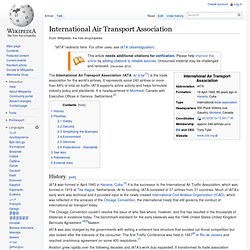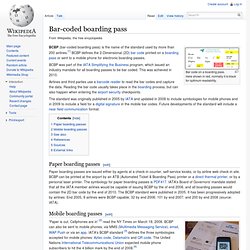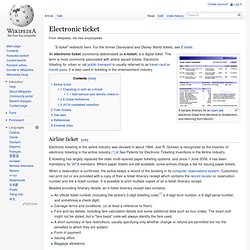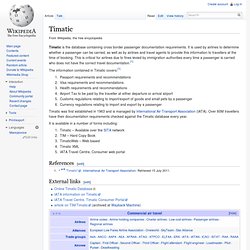

BSP. IATA Simplifying the Business. The International Air Transport Association (IATA /aɪˈɑːtə/[1]) is the trade association for the world’s airlines.

It represents some 240 airlines or more than 84% of total air traffic. IATA supports airline activity and helps formulate industry policy and standards. It is headquartered in Montreal, Canada with Executive Offices in Geneva, Switzerland.[2] History[edit] The Chicago Convention couldn’t resolve the issue of who flies where, however, and this has resulted in the thousands of bilaterals in existence today. IATA was also charged by the governments with setting a coherent fare structure that avoided cut-throat competition but also looked after the interests of the consumer.
Aviation grew rapidly over the following decades and IATA’s work duly expanded. IATA has cemented its position as the voice of the aviation industry in recent years, launching a number of important programs and lobbying governments in the wake of successive crises. Priorities[edit] Safety[edit] Security[edit] Bar Coded Boarding Pass. Bar code on a boarding pass.

Here shown in red, normally it is black for optimum readability. BCBP (bar-coded boarding pass) is the name of the standard used by more than 200 airlines.[1] BCBP defines the 2-Dimensional (2D) bar code printed on a boarding pass or sent to a mobile phone for electronic boarding passes. BCBP was part of the IATA Simplifying the Business program, which issued an industry mandate for all boarding passes to be bar coded. This was achieved in 2010. The standard was originally published in 2005 by IATA and updated in 2008 to include symbologies for mobile phones and in 2009 to include a field for a digital signature in the mobile bar codes. Paper boarding passes[edit] Paper boarding passes are issued either by agents at a check-in counter, self-service kiosks, or by airline web check-in site. Mobile boarding passes[edit] A mobile boarding pass and a paper boarding pass printed after online check-in. At least 36 airlines use mobile BCBP: See also[edit] References[edit]
Electronic ticket. A sample itinerary for an open jaw electronic ticket from Montreal to Amsterdam, and returning from Munich An electronic ticket (commonly abbreviated as e-ticket) is a digital ticket.

The term is most commonly associated with airline issued tickets. Electronic ticketing for urban or rail public transport is usually referred to as travel card or transit pass. It is also used in ticketing in the entertainment industry. Airline ticket[edit] Electronic ticketing in the airline industry was devised in about 1994. E-ticketing has largely replaced the older multi-layered paper ticketing systems, and since 1 June 2008, it has been mandatory for IATA members. When a reservation is confirmed, the airline keeps a record of the booking in its computer reservations system. Besides providing itinerary details, an e-ticket itinerary receipt also contains: Checking in with an e-ticket[edit] To check in for a flight with an e-ticket, the passenger usually goes to the check-in counter in the usual manner. International Air Transport Association. Timatic. Timatic is the database containing cross border passenger documentation requirements.

It is used by airlines to determine whether a passenger can be carried, as well as by airlines and travel agents to provide this information to travellers at the time of booking. This is critical for airlines due to fines levied by immigration authorities every time a passenger is carried who does not have the correct travel documentation.[1] The information contained in Timatic covers:[1] Passport requirements and recommendationsVisa requirements and recommendationsHealth requirements and recommendationsAirport Tax to be paid by the traveller at either departure or arrival airportCustoms regulations relating to import/export of goods and small pets by a passengerCurrency regulations relating to import and export by a passenger Timatic was first established in 1963 and is managed by International Air Transport Association (IATA).
It is available in a number of forms including: References[edit] IATA.